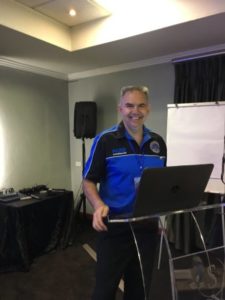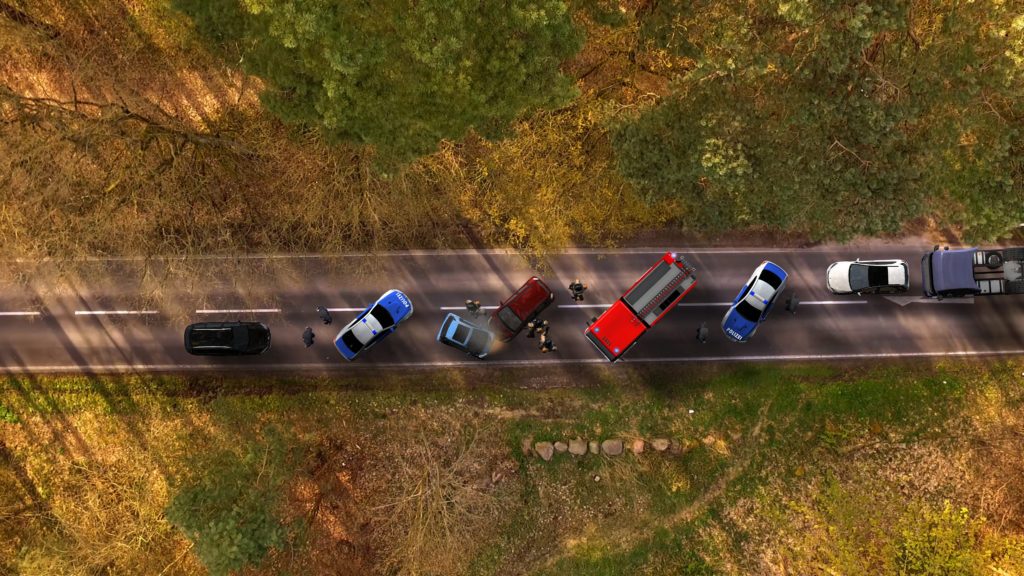
Bezuidenhout explains that crash investigation is never simple – his organization has a 124 point protocol of everything that needs to be done to gather all of the evidence at the scene of an accident. A standard investigation yields 200-250 photographs per car – because every crash scene is a potential crime scene. “We don’t know what will happen in court,” says Bezuidenhout. “We don’t know immediately if the accident involved airbags, seat belts, drugs, environmental damage… we never know which accidents will end up as criminal cases.”
“If you don’t handle the scene properly, those crashes cannot be prosecuted,” says Bezuidenhout. “There’s no such word as ‘only’ or ‘just’ at a crash scene,” says Bezuidenhout. “You didn’t ‘only bump.’ We don’t like to call them ‘accidents’… they are crashes.”
With all of the the points that need to be addressed at crash scenes, Bezuidenhout says that the greatest challenge remains measuring and drawing of scenes. “I’ve done thousands of crash scenes,” he says. “My record stands at 36 accidents in a weekend, over 200 in a month… and I’ve only seen one scene actually drawn properly.”
“A very small percentage of people are able to stand on a crash scene and actually see it from above,” says Bezuidenhout.
Previously, his team used 3D laser solutions for actual measurements – but that was an expensive and problematic solution, involving multiple experts and taking sometimes upwards of three hours, an unacceptable length of time. “Do what you have to do, do it quickly, and leave,” says Bezuidenhout. “You can’t keep the roads closed for long periods.”
Drones – small, inexpensive drones – provide the perfect solution. Simpler is far better for investigators, he says, pointing out that he and his team want to be forensic crash specialists, not drone specialists. As his team has used more complex and expensive equipment, they’ve come back to the smaller and the simpler. In fact, currently the team uses a DJI Mavic. “Collision avoidance, 4k video, 10 km range.. that’s all great stuff. But we don’t need it…we never go beyond a 500 m range, I never go over 100 meters and I don’t ever need more than 10 minutes to fly. If I need more than 10 minutes to fly, the case is too complicated to do this way.”
“We don’t need a point cloud,” he says. “We can’t use it in court… you need to dumb things down.”
By keeping it simple, compact and easy to transport, the IBF team is able to get the job done quickly and well. They have a proven record of being able to prove their cases in court, and they’ve established exactly what it is that they need to be successful. With an easy to use consumer drone, Bezuidenhout has made drone use at crash scenes accessible – proving the use case for this vertical rapidly expanding across the globe.
Miriam McNabb is the Editor-in-Chief of DRONELIFE and CEO of JobForDrones, a professional drone services marketplace, and a fascinated observer of the emerging drone industry and the regulatory environment for drones. Miriam has penned over 3,000 articles focused on the commercial drone space and is an international speaker and recognized figure in the industry. Miriam has a degree from the University of Chicago and over 20 years of experience in high tech sales and marketing for new technologies.
For drone industry consulting or writing, Email Miriam.
TWITTER:@spaldingbarker
Subscribe to DroneLife here.
